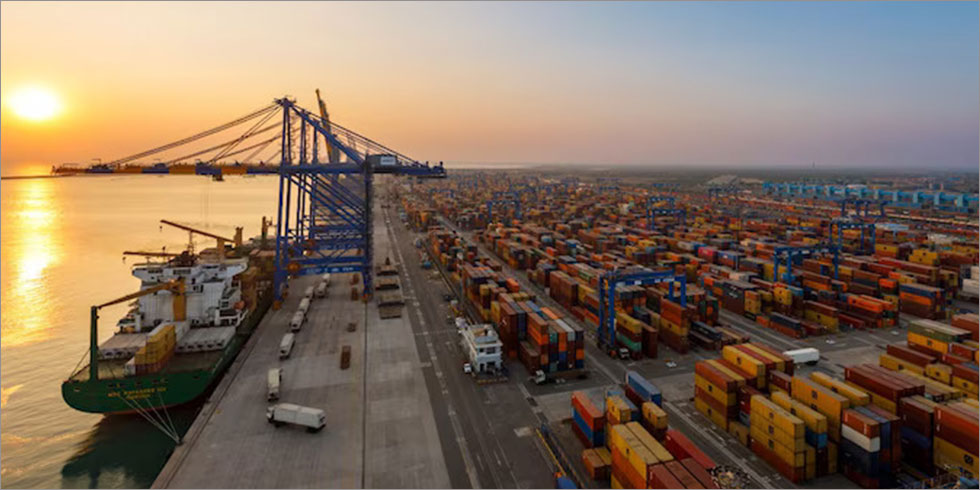India's top oil and gas producer ONGC plans to put about ₹1 lakh crore in setting up two petrochemical plants to change over raw petroleum straightforwardly into high-esteem synthetic items as it gets ready for energy progress, top organization authorities said on Wednesday 15 November 2023.
Unrefined petroleum, which organizations like ONGC siphon out from underneath seabed and underground supplies, is an essential wellspring of energy. It is handled in petroleum treatment facilities to create petroleum, diesel and stream fuel. With the world hoping to progress away from non-renewable energy sources, organizations all over the planet are taking a gander at new roads to utilize unrefined petroleum.
Petrochemicals are compound items got from unrefined petroleum and utilized in the assembling of cleansers, filaments (polyester, nylon, acrylic and so on), polythene and other man-made plastics.
At a financial backer approach the organization's second-quarter income, Oil and Petroleum gas Enterprise (ONGC) Chief (Money) Pomila Jaspal said the firm is hoping to assemble separate oil-to-substance (O2C) projects.
India's top oil and gas maker ONGC plans to put about ₹1 lakh crore in setting up two petrochemical plants to change over unrefined petroleum straightforwardly into high-esteem substance items as it gets ready for energy progress, top organization authorities said on Wednesday.
Raw petroleum, which organizations like ONGC siphon out from underneath seabed and underground repositories, is an essential wellspring of energy. It is handled in petroleum processing plants to deliver petroleum, diesel and fly fuel. With the world hoping to change away from petroleum derivatives, organizations all over the planet are taking a gander at new roads to utilize unrefined petroleum.
Petrochemicals are compound items got from raw petroleum and utilized in the assembling of cleansers, filaments (polyester, nylon, acrylic and so on), polythene and other man-made plastics.
At a financial backer approach the organization's second-quarter profit, Oil and Petroleum gas Partnership (ONGC) Chief (Money) Pomila Jaspal said the firm is hoping to fabricate separate oil-to-synthetic (O2C) projects.
"We have plans to contribute ₹1,00,000 crore by 2028 or 2030 of every two tasks in two separate states," said D Adhikari, Leader Chief and Head of Joint Endeavours and Business Advancement, ONGC, on the financial backer call.
"We will probably raise petrochemical ability to 8.5-9 million tons by 2030." One undertaking is probably going to be set up by ONGC all alone and the other in a joint endeavour. The subtleties were not partaken in the call.
Interest for petrochemicals, the structure blocks for plastics, manures and drugs, is projected to serious areas of strength for stay to their great many purposes across enormous businesses, including development, car and gadgets. Reinforcing its synthetic substances business will likewise help the state-run oil wayfarer cut its dependence on the unstable oil market and further develop productivity over the long haul.
ONGC as of now has two auxiliaries Mangalore Processing plant and Petrochemicals Restricted (MRPL) and ONGC Petro-Augmentations Restricted (OPaL) that run petrochemical units at Mangalore in Karnataka and Dahej in Gujarat, separately.
To address this, the ONGC board has supported implanting ₹18,355 crore capital in OPaL to bring its stake up in the firm to more than 96% from the current 49.35%, he said.
GAIL (India) Ltd as of now has 49.21% and the leftover 1.43% is with Gujarat State Petrochemical Corp (GSPC).
Just ONGC is doing the value implantation, which will everything except edge GAIL out of the joint endeavour.
This, he said, would "for a brief time" make OPaL an auxiliary of ONGC however the organization needs to hold the joint endeavour nature of the organization and will hope to get an essential accomplice in the following three years.
The value imbuement will help OPaL pivot and become beneficial in monetary 2024-25, he said.
The Worldwide Energy Organization (IEA) gauges that worldwide oil request will level by 2030 as entrance of electric vehicles and expanded take-up of elective drive advancements for business vehicles ebb interest for petroleum derivatives. Thus energy firms all over the planet are checking options out.
Raw petroleum to-synthetics (COTC) innovation permits the immediate transformation of raw petroleum to high-esteem compound items rather than conventional transportation fills. It empowers the creation of synthetics surpassing 70% to 80% of the barrel-delivering compound feedstock rather than around 10% in a non-coordinated processing plant complex.
China and the Centre East record for a larger part of COTC plants that have been arranged or have begun tasks. Saudi Aramco and SABIC have declared plans for a COTC plant that will interaction 4,00,000 barrels each day of Middle Eastern Light raw petroleum to create around 9 million tons of synthetic substances each year.
ONGC means to gain by this pattern, with plans to considerably extend its substance and petrochemical portfolio from the ongoing 4.2 million tons for every annum to 8.5-9 million tons by 2030, Adhikari said.
The interest in O2C plants is discrete from the Rs 1 lakh crore speculation ONGC has declared in energy change projects by 2030, which will assist it with accomplishing net zero fossil fuel byproducts by 2038.
ONGC plans to increase its sustainable portfolio to 10 GW by 2030.








Add Comment